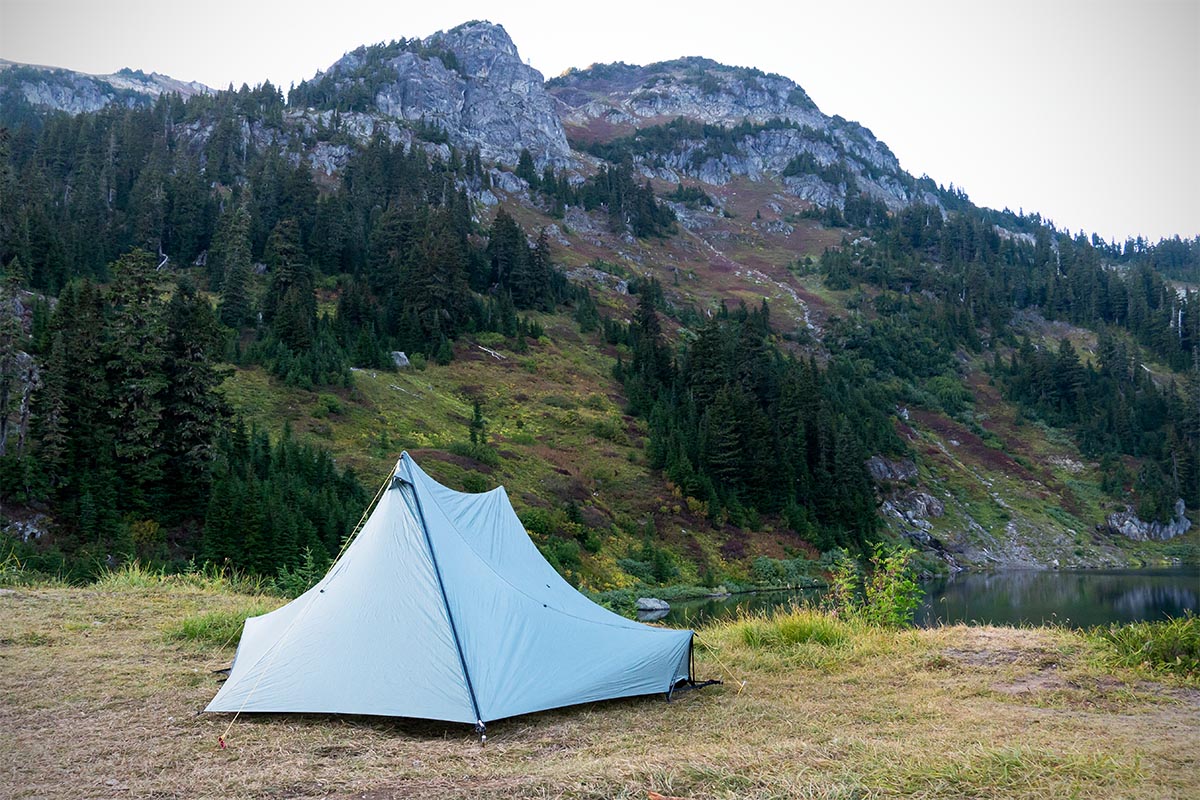
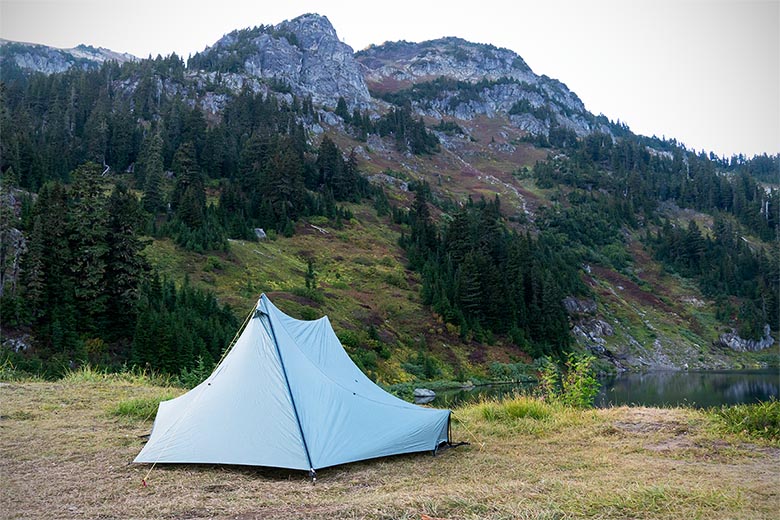
Switchback Travel (Eric de Paoli)


Switchback Travel (Eric de Paoli)
Price: $299 ($329 w/ solid interior)
Packaged weight: 2 lb. 11.8 oz.
Floor area: 31.1 sq. ft.
Capacities: 1P, 2P
What we like: Spacious for its weight, reliable in inclement weather, and affordably priced.
What we don’t: Asymmetrical design and large footprint make setup difficult; heavier than most UL competitors.
See the Tarptent StratoSpire 2
In a rapidly growing segment of ultralight tents, the Tarptent StratoSpire 2 stands out for its spacious and thoughtfully built design at an approachable price point. A longstanding option in their lineup, the latest StratoSpire—which features a new silpoly rainfly—proved to be very livable and impressively robust for its weight during testing. Getting a taut pitch does take some patience and finesse, and there are several intricacies to the unique shape and design, but overall, it’s a very functional space for two and an excellent performer in inclement weather. Below are our thoughts on the StratoSpire. To see how it stacks up to the competition, check out our articles on the best ultralight tents and best backpacking tents.
Checking in at 2 pounds 11.8 ounces, the Tarptent StratoSpire 2 is reasonably light for a double-wall design but not a standout in the wider UL market. This weight includes the mesh body (the solid interior option is 0.8 oz. lighter), stuff sack, and six included stakes in their bag. For comparison, Durston’s X-Mid 2, which has a similar design and geometry to the StratoSpire, clocks in a little lighter at 2 pounds 6.4 ounces. Other leading two-person UL designs, including the Zpacks Duplex and Hyperlite Unbound 2P, shave off even more weight at 1 pound 2.5 ounces (without stakes, which are sold separately) and 1 pound 8 ounces respectively, although they're noticeably less breathable due to their single-wall constructions. Final comparisons include the Big Agnes Tiger Wall 2 (2 lb. 8 oz.) and Tarptent’s own Double Rainbow (2 lb. 9.5 oz.), both of which are less spacious than the StratoSpire but don’t rely on trekking poles for support and are easier to set up as a result.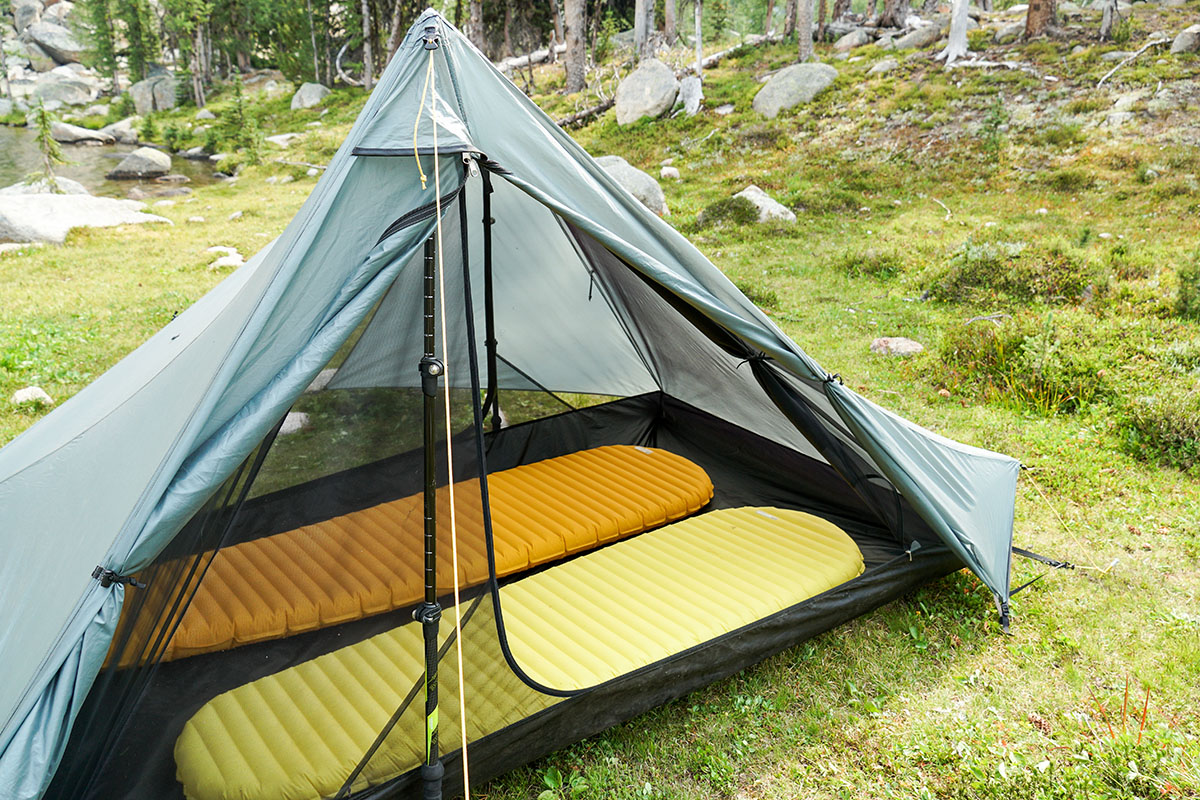
Regarding packed size, the StratoSpire 2 rolls into a competitively tight bundle: 17 x 7 inches by my measurements (Tarptent lists it smaller at 16 x 5 in.). That said, the PitchLoc struts, which are designed to boost interior volume and ventilation (more on these below), are rigid and fairly long at 16 inches, resulting in an oblong shape that makes the tent difficult to stuff horizontally in a pack. The struts can be removed to reduce packed size, but I admittedly just left them in place—they come pre-attached out of the box—as it would have added another step to an already-tedious setup process (more in “Set Up and Take Down” below).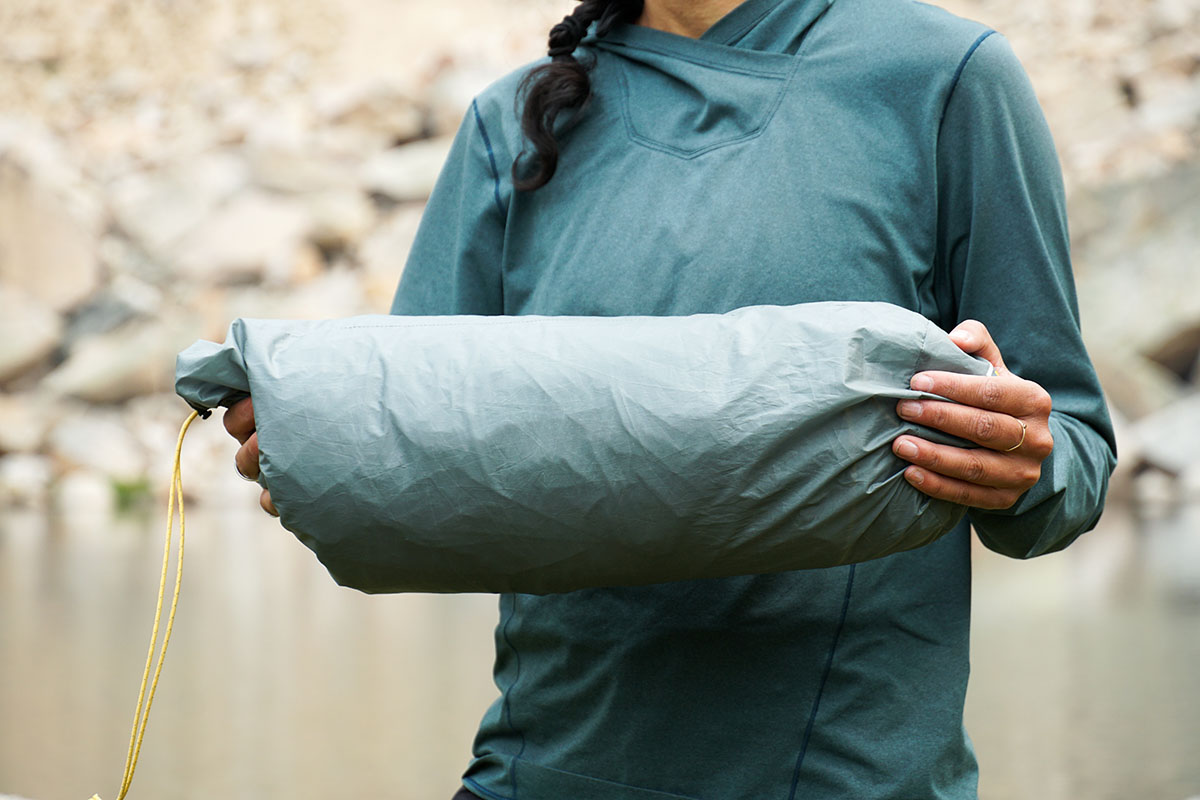
Real-life capacity doesn’t always line up with a tent’s designation, but the StratoSpire 2 feels like a true two-person tent. With a clever asymmetrical design and trekking poles to support dual entry, the tent can easily accommodate two adults and gear without feeling cramped. Even when camping with both my partner and our dog occupying a corner of the tent, I never once felt strapped for space. The 52-inch width was ample for fitting two standard (20-in.-wide) sleeping pads side by side with lots of room to spare, and Tarptent advertises that the bathtub floor can be flattened to 62 inches to fit three pads. I didn’t attempt to sleep three adults in the tent—and doing so would of course take away some of the StratoSpire’s livability benefits—but it’s an intriguing option for those that occasionally want to squeeze in a third.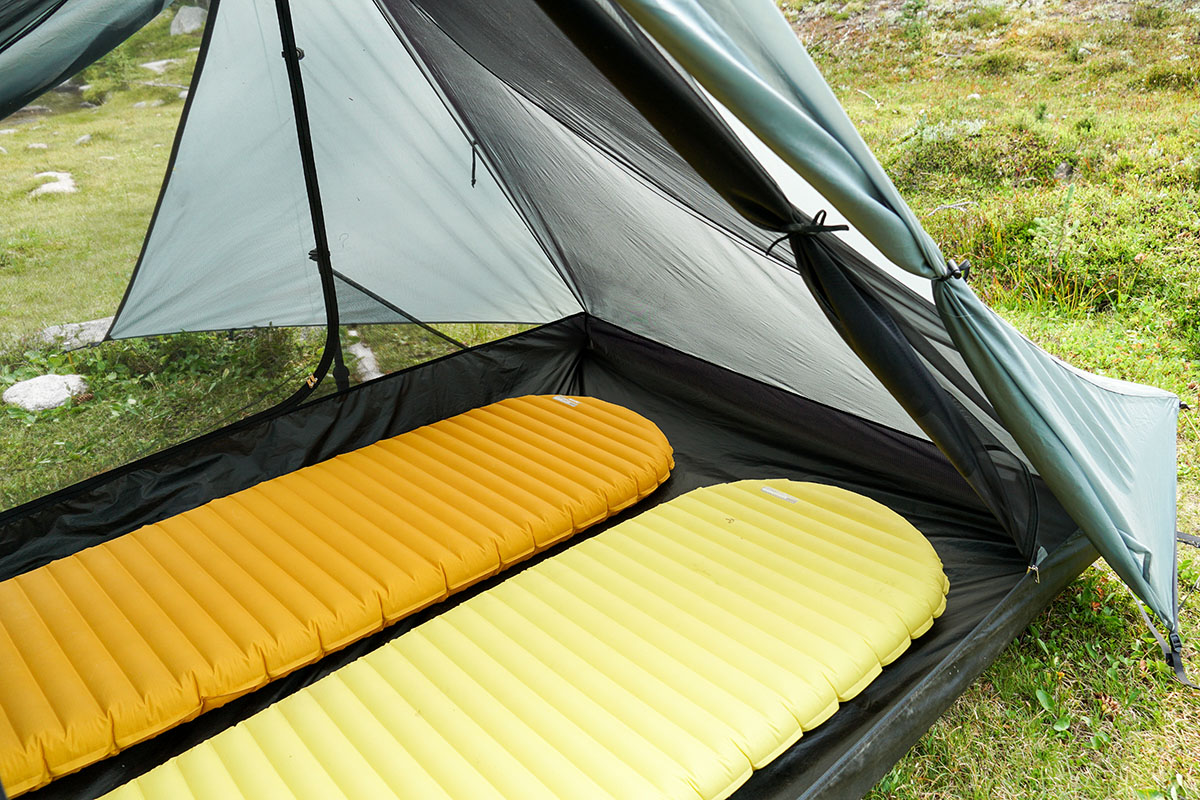
The StratoSpire’s 48-inch peak height is ample for most hikers to sit up without having to hunch over. During one rainy evening, I was happy to find that I could stand up and change out of my wet clothes. While I was still crouched, this was quite impressive given my 6-foot frame. The only downside is that the tent’s diagonal ridgeline makes it hard for two people to sit upright side-by-side at the same time, and the mesh body hangs relatively low at either end. For taller hikers, this means less space between the inner net and your head when lying down—it was easy to brush against the mesh when sitting up, which detracted from the otherwise spacious feel.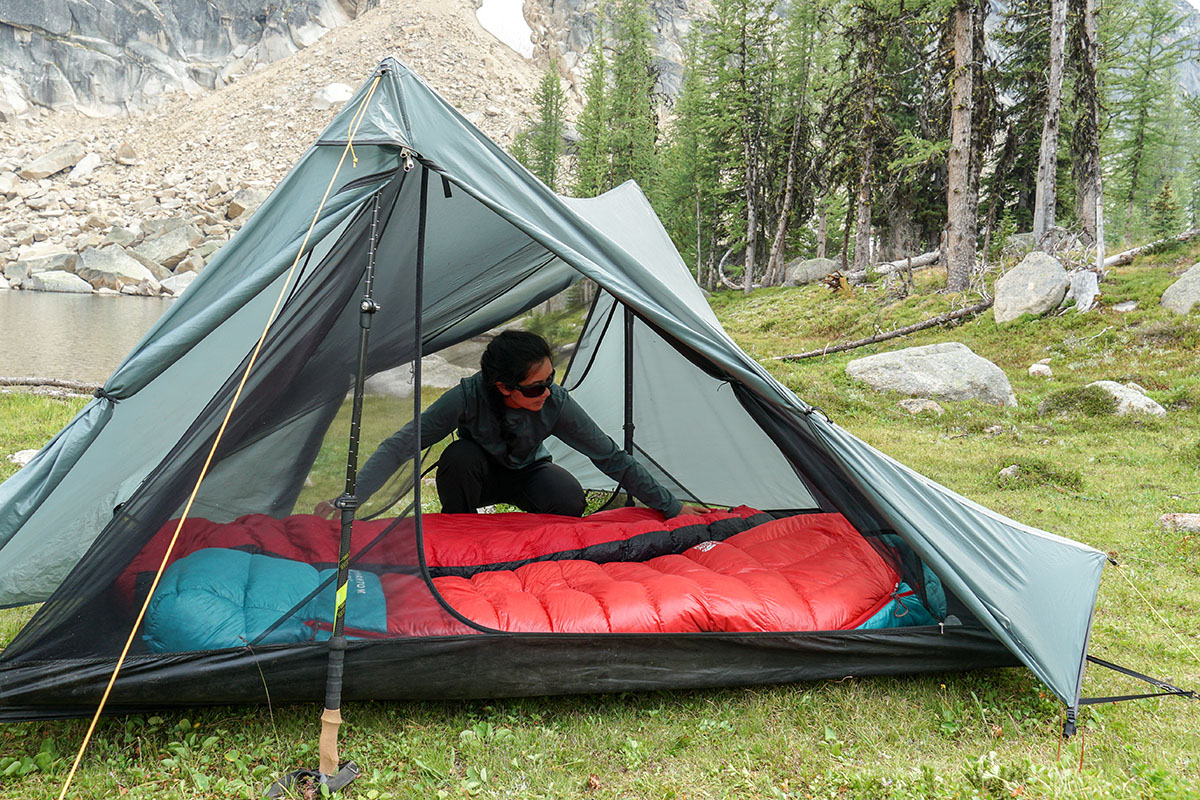
Tarptent is known for making long-lasting shelters, and the StratoSpire 2 is no exception. Tarptent recently swapped the rainfly fabric from 20-denier (D) silicone-coated nylon to 20D silicone-coated polyester (silpoly for short), the latter of which is a little less durable but more UV-resistant and less prone to sagging in wet weather. The floor is slightly thicker at 30D, while the mesh interior is thinner at 15D (note: The pricier solid insert is 10D). In testing, the floor was reasonably confidence-inspiring—more so than many other UL designs we’ve used—and held up flawlessly without a footprint. The rainfly is similarly sturdy and showing no signs of wear after considerable use. It’s worth noting that Tarptent lists the StratoSpire as a "3+ season" tent, but we’d hesitate to recommend it for any adventure involving sharp edges (e.g., crampons) or true winter conditions. But for summer and shoulder-season outings below treeline, it’s plenty tough and hardwearing.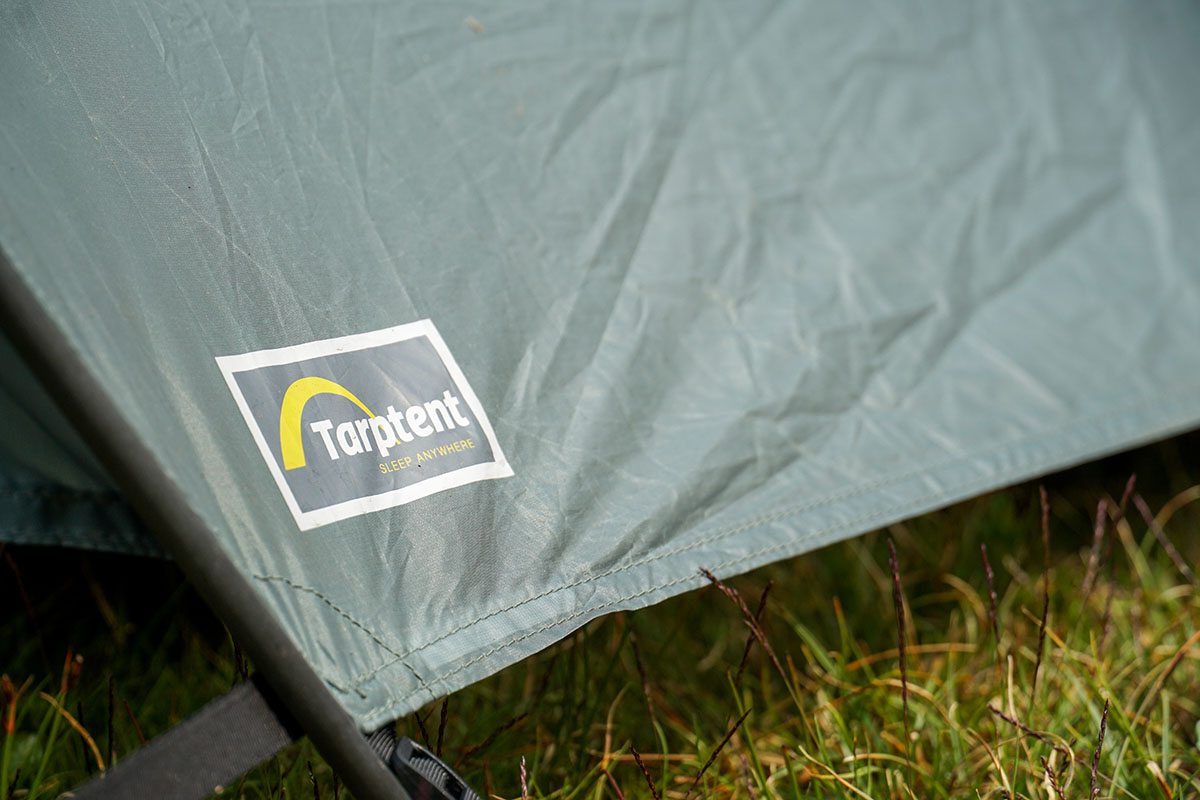
All that said, I did come away with a couple of durability-related complaints. The first is that it’s difficult to slide trekking poles into the apex grommets to keep the tent upright, which can result in tearing a hole in the rainfly (the poles are inserted handle-down). I had a few close calls during testing when my poles weren’t properly seated and could have easily poked through the fly, but paying close attention when setting up camp will help minimize any issues. Another gripe is that the fly zippers felt strained with the tent pitched tautly and ran less smoothly as a result. Again, exercising care will be paramount to maximizing the tent’s lifespan. But overall, the StratoSpire feels on par with—if not a little more robust than—most ultralight competitors. 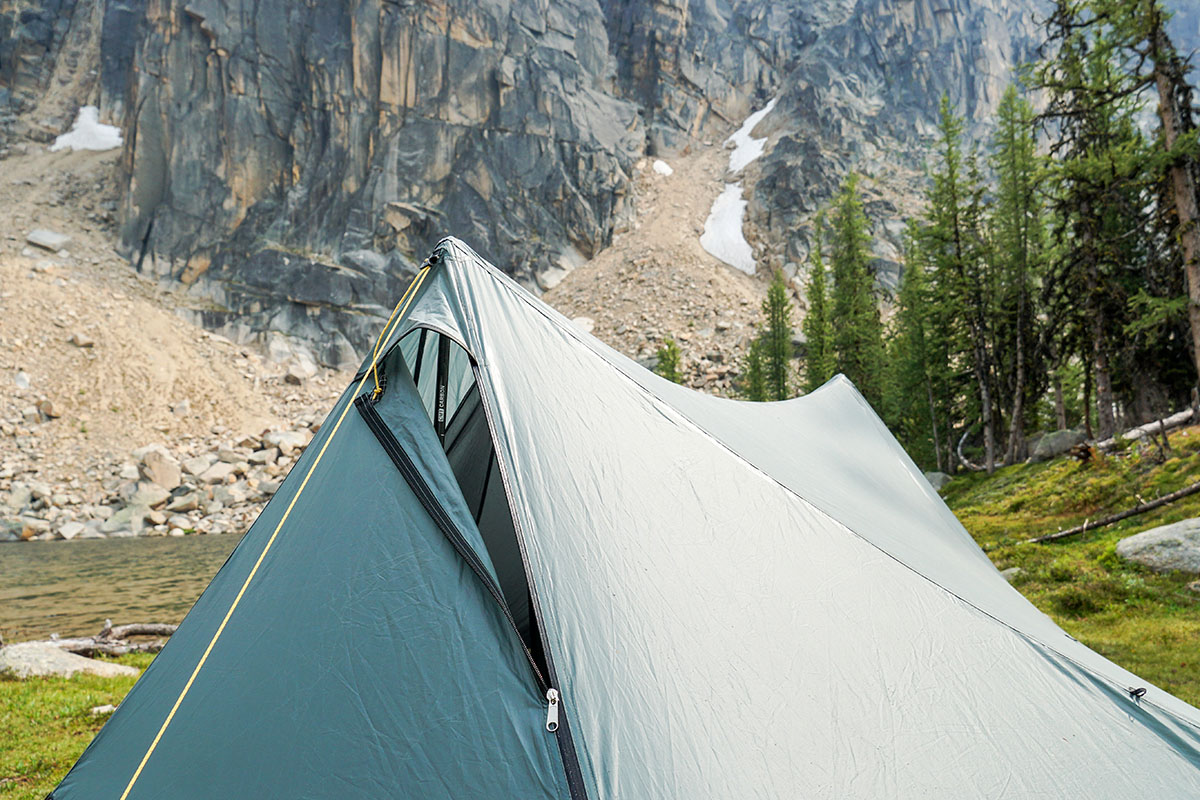
Wind
As an evolution of the time-tested A-frame shape, it comes as no surprise that the StratoSpire 2 is an excellent performer in blustery weather. The only caveat is that the pitch must be taut—if not, any loose fabric will be buffeted in high winds. When set up properly, however, including using all of the guy-out points, the StratoSpire is able to withstand remarkably strong gusts. In testing, wind sloughed off the slanted walls, the tall bathtub floor was a big help with preventing drafts from reaching the interior, and being able to raise or lower the fly (depending on how you position your trekking poles) offered a lot of versatility in shifting conditions. Tarptent also sells a solid interior that costs $30 more than the mesh insert and can be swapped in or out for added protection from blowing snow or sand, which would bring it closer to their 3+ season designation.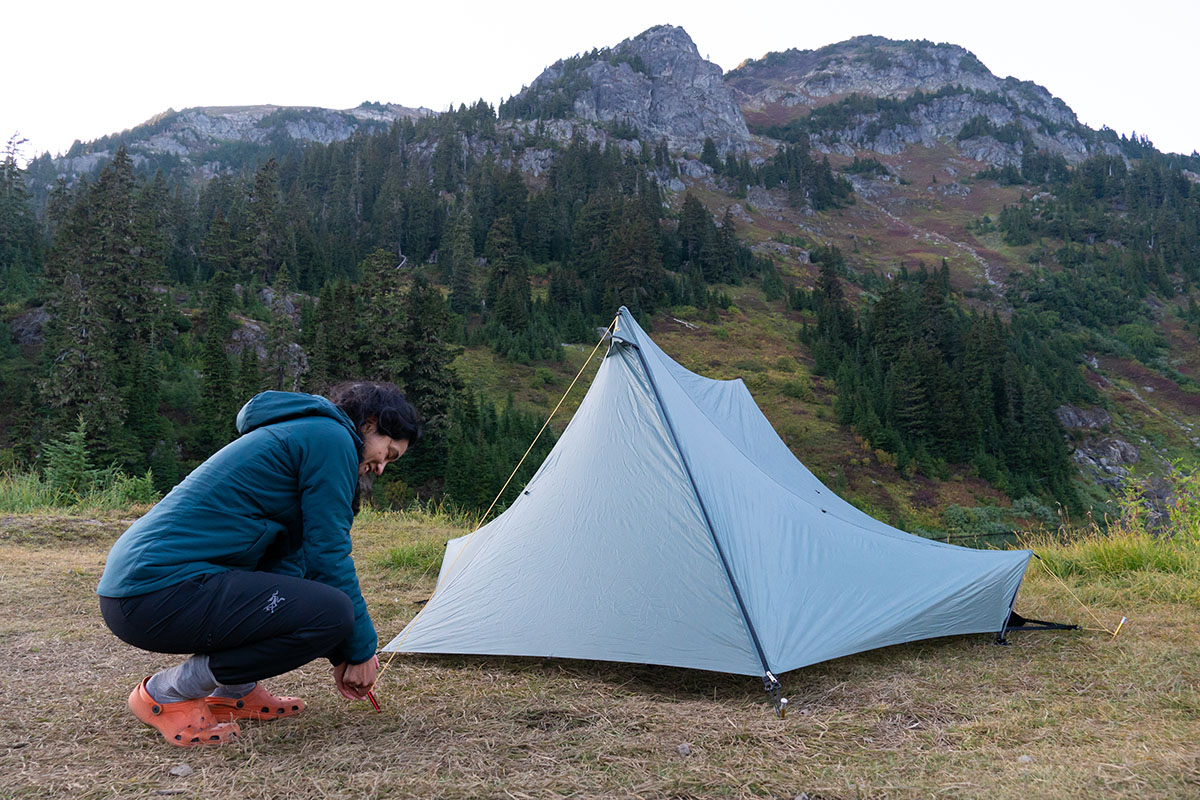
Rain
The StratoSpire 2 is equally reliable in the wet. In practice, the full-coverage rainfly—equipped with water-resistant zippers—shrugged off everything from extended drizzles to severe thunderstorms without issue. The silpoly fabric mentioned above likely played a big role: The tent held its shape even in heavy moisture and never required re-tightening, which isn’t always the case with trekking pole-supported shelters. The StratoSpire also pitches “fly-first,” which keeps the interior dry even if you have to set up camp in a storm. The only area of potential vulnerability I found was near the PitchLoc struts where there’s very little distance between the mesh inner and rainfly, which is an obvious entry point for splattering rain in prolonged or heavy moisture. I haven’t had any issues to date, however, and the StratoSpire strikes me as very weather-worthy overall—especially for a UL design. Note: you can have the tent seam-sealed for an additional $35 or DIY for less (Tarptent sells kits for $6 to $8).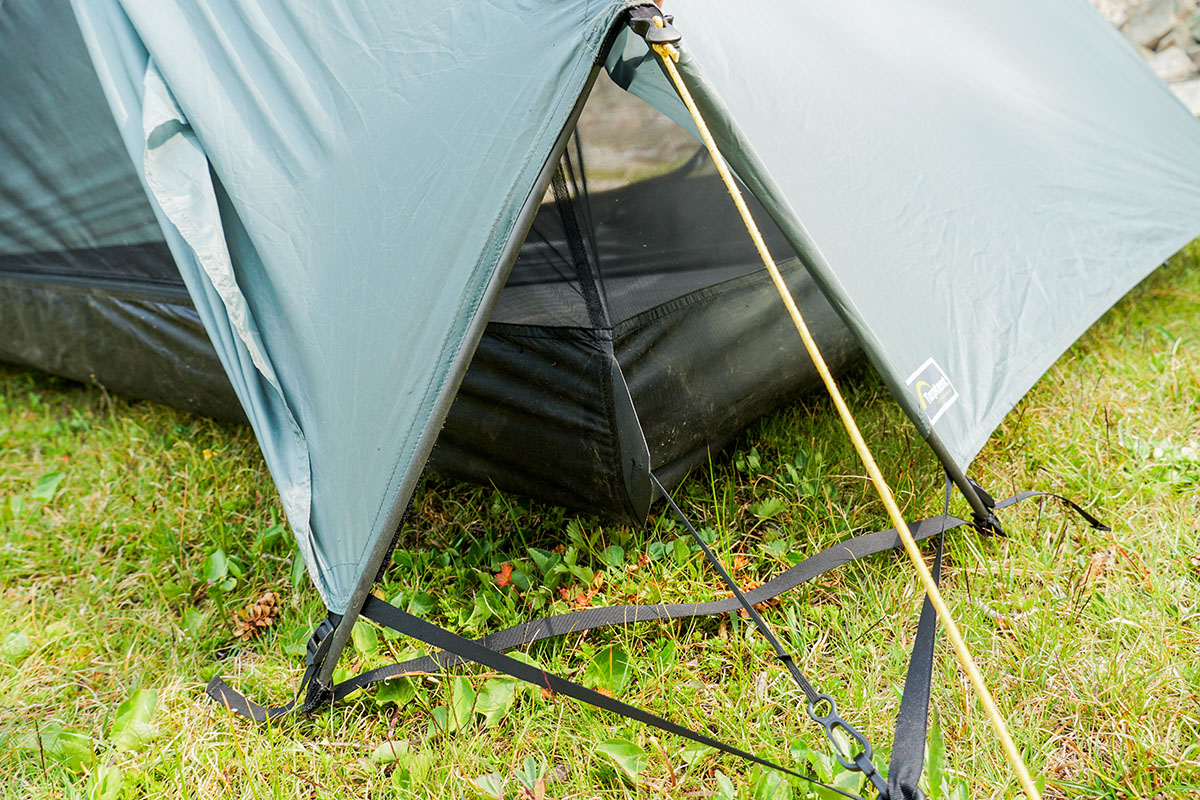
Like many double-wall tents, the Tarptent StratoSpire 2 manages condensation very well, even in wet and humid environments like the Pacific Northwest. There’s a generous amount of separation between the tent body and rainfly, which allows ample room for air to flow between the two. The bathtub floor can also be flattened to increase ventilation even further, but I never had to revert to that. Additionally, the vestibule’s two-way zipper makes it easy to open the doors partially without completely sacrificing weather protection. And for the ultimate in ventilation, you can pitch the body without the fly by unclipping the two, which is especially great for stargazing on clear nights. Finally, the StratoSpire includes two lower vents (at the PitchLoc struts) and two apex vents, but I found the latter to be prohibitively small and prone to collapsing inward, which resulted in little to no added breathability. Tarptent could certainly improve the design, but thankfully, the upper vents weren’t critical to staying comfortable.
One of the StratoSpire’s best features, in my opinion, is the generous amount of vestibule space. This is largely thanks to the asymmetrical design and hexagonal pitch that positions the trekking poles slightly off-center from the fly, effectively increasing the footprint to allow more room for gear. In practice, the two 12.8-square-foot vestibules offered ample space to stash two packs, two pairs of hiking shoes, and our cook kit. They also make it very easy to enter and exit—along with the large mesh doors—and there are several options for tweaking the rainfly (rolled fully back, partially open via the two-way zipper, etc.) depending on conditions.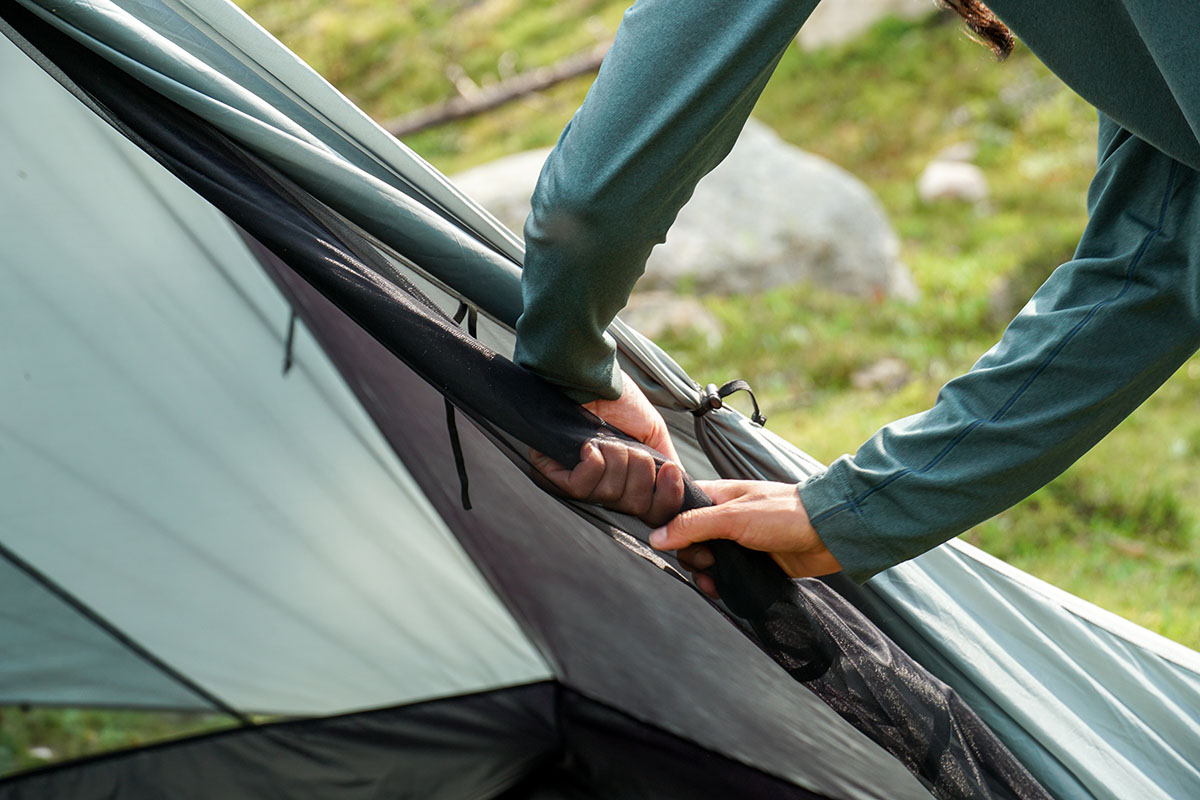
The only notable drawback to the large vestibules is that they increase the tent’s already-substantial footprint, which can make it difficult to pitch in tight spaces. Tarptent did equip the StratoSpire with door buckles that allow you to flatten the vestibules in a pinch, but this would eliminate exterior storage space and cause water to pool close to the bathtub floor. In my opinion, it’s really only viable as a last resort.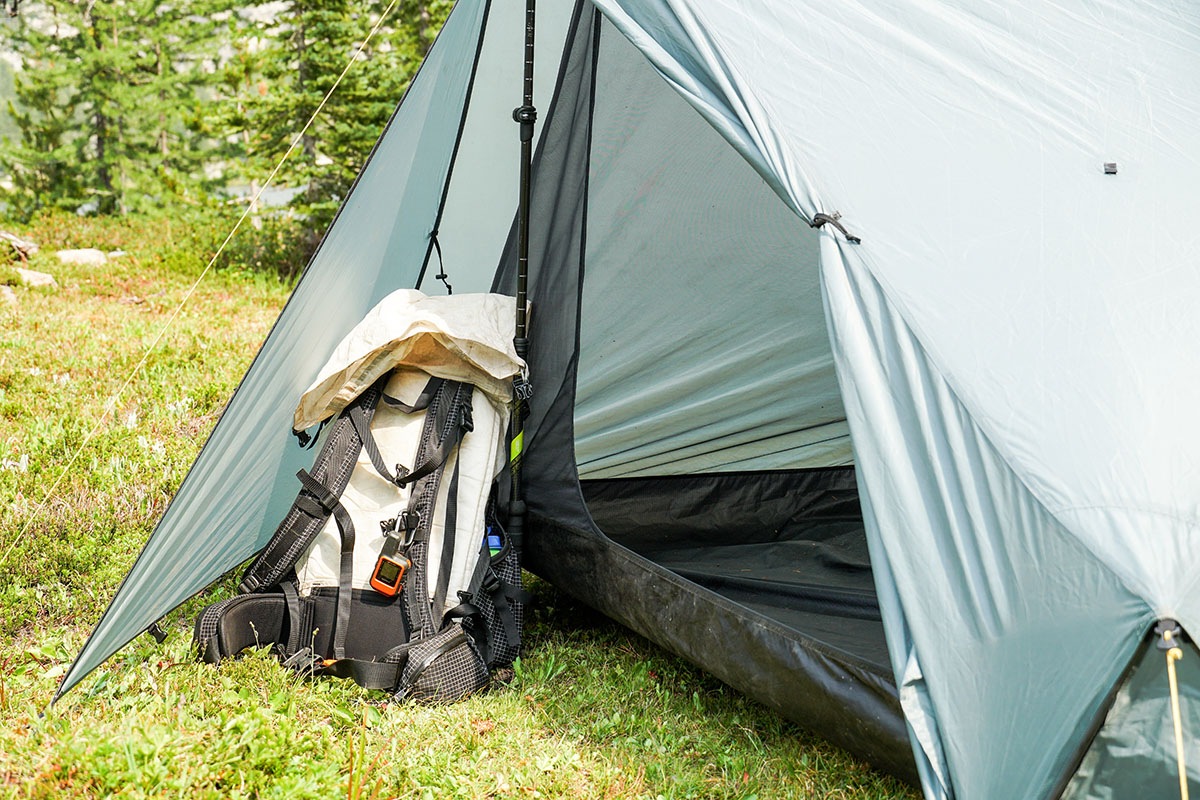
Unfortunately, internal organization is notably limited with just two small mesh pockets on either side of the door. Additional storage at the head or foot end would have been a huge help for organizing smaller items like electronics and other valuables, but it wasn’t a dealbreaker by any means (and as far as compromises go, this is pretty standard among UL designs). On the bright side, Tarptent did include several attachment points for securing cord to hang accessories, and they also sell a compatible gear loft for an additional $17.
One common downside to trekking pole-supported ultralight tents is that they can be tricky to pitch at first, and that held true with the StratoSpire 2. In fact, it took me around a dozen times until I felt entirely confident in the process given the tent’s unique geometry. To start, lay the tent body on the ground—it’s connected to the rainfly—and stake out either vestibule, then insert one of your trekking poles handle-side down into the grommet at the apex on the same side. Insert your second pole on the other side, holding the tent’s ridgeline for support, and then stake out the edges. The remaining “PitchLoc” ends (which I outline further below) are easy to erect by inserting stakes through the loops and pulling everything taut with the included adjustment cords. However, I would recommend upgrading the stakes and bringing a couple extra—the cylindrical pegs that come with the tent held poorly in firm ground, and we needed eight (two more than what’s included) to properly secure the ridgeline in wind and rain. 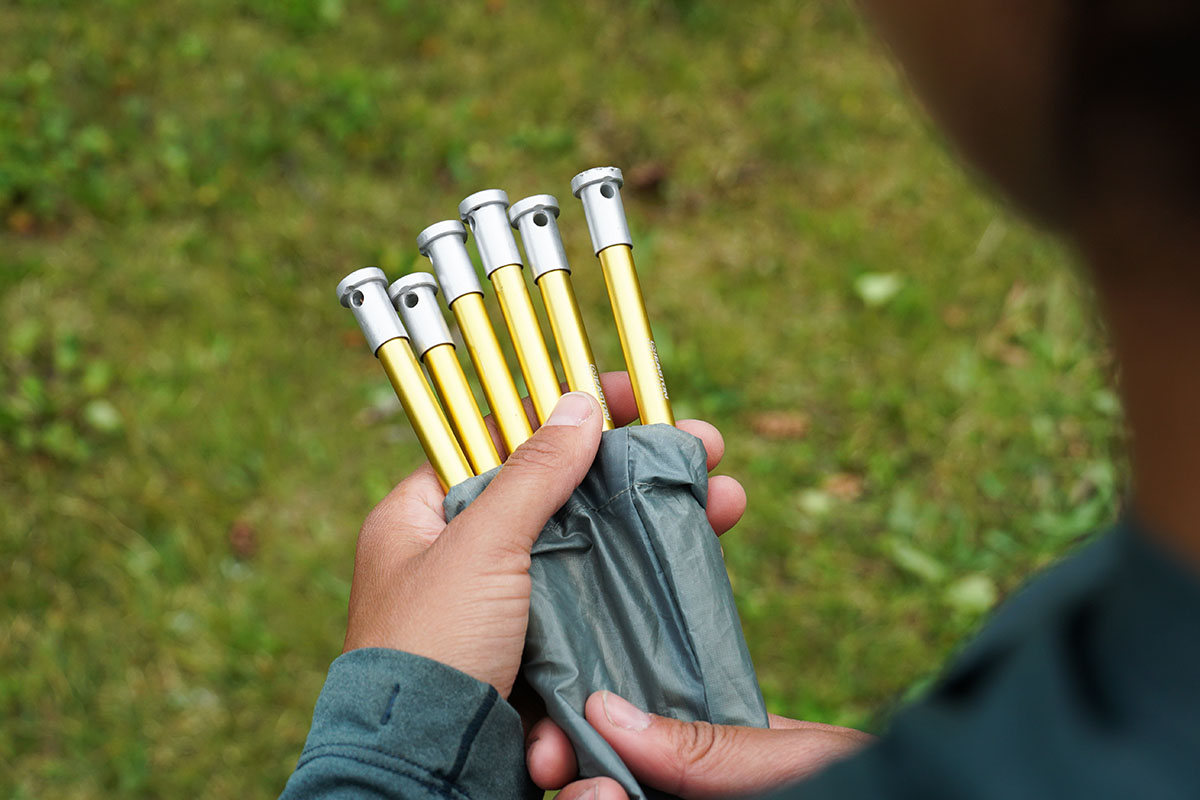
Readjustments were key to achieving a taut pitch with the StratoSpire. I often had to reposition multiple stakes to get everything evenly tensioned, and the fly required added attention anytime we anticipated rain or wind to ensure there was no sagging fabric that could get whipped around. I also had to shorten or lengthen my trekking poles after their initial placement quite frequently (once everything was staked out) in order to maximize stability. In the end, the StratoSpire is undeniably more involved than a freestanding tent, but the process—including both pitching and adjusting—isn’t overly labor-intensive and does get significantly easier with time. I recommend watching Tarptent’s detailed setup video and practicing before you head out for the first time.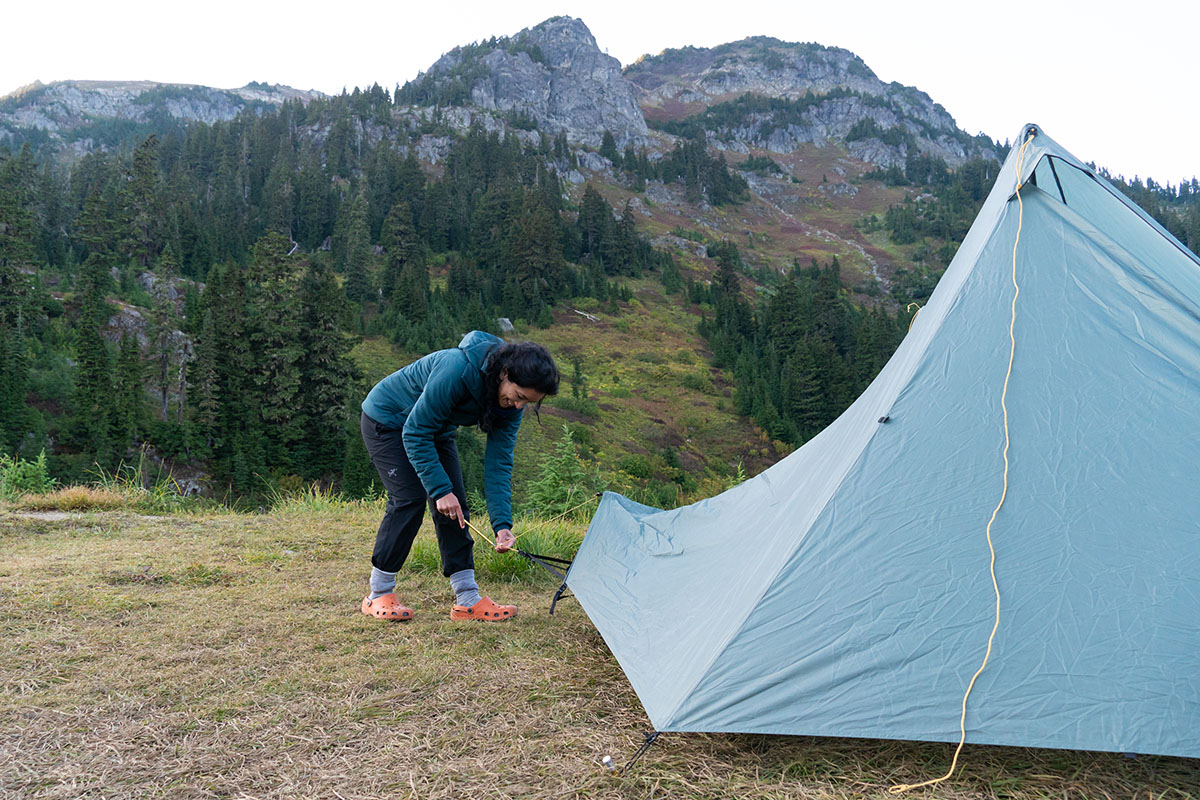
PitchLoc Struts
The PitchLoc struts mentioned above are a key component of the StratoSpire's design and worth covering in more depth. Positioned at each end of the tent, the carbon struts (four total) form a triangle with attachments at the bottom and top to tension them in place and stake them out. The intention is to maximize interior volume, stability, and ventilation, and while they do a decent job of accomplishing those goals, I found the design to be overly cumbersome. As I mentioned above, the struts come pre-attached and are relatively long, which results in an awkward shape when packed. They’re also prone to falling out during setup, and reinserting them into the sleeves is fairly tedious. All told, I applaud Tarptent for thinking outside the box but think the PitchLoc design could use some improvements.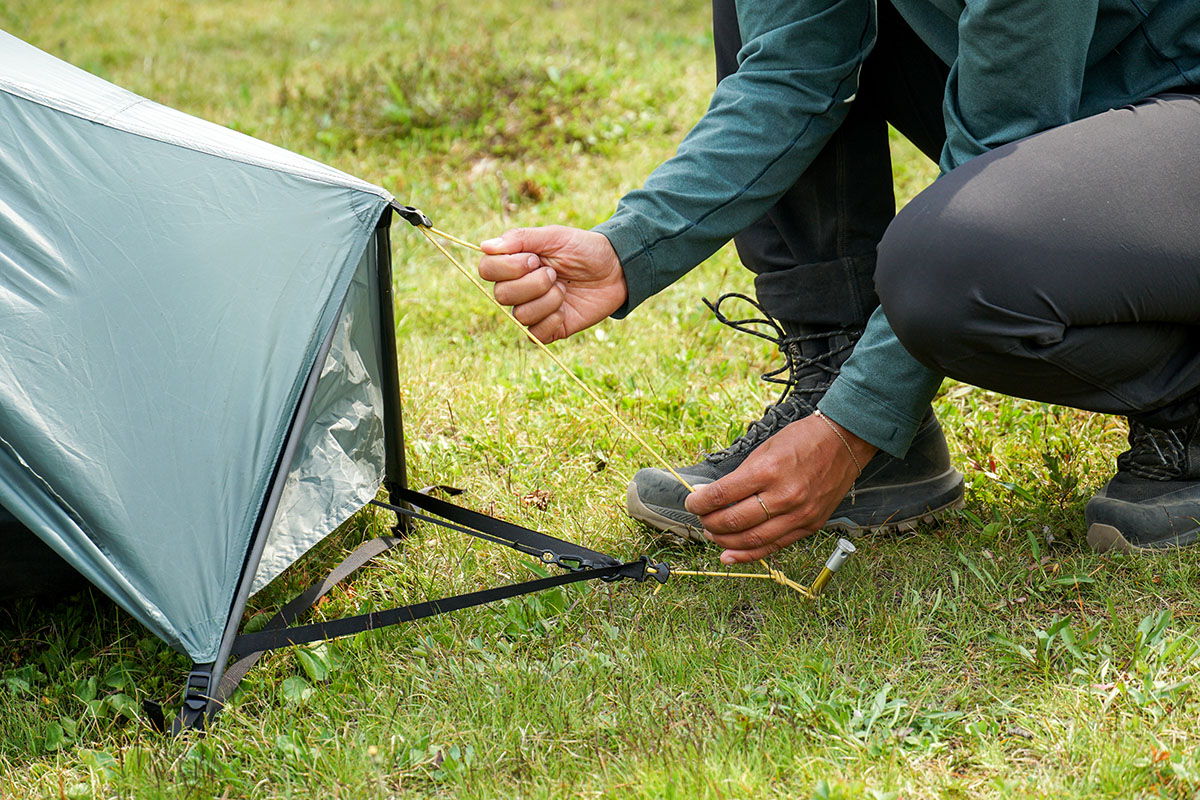
We tested the StratoSpire 2 for this review, and it’s also available in a one-person capacity for $279 with a mesh insert ($309 with a solid interior). The StratoSpire 1 weighs 2 pounds 4.6 ounces all in, boasts 19.1 square feet of floor area, and has the same peak height and vestibule space as its larger sibling. For the most discerning of ounce-counters, Tarptent also offers the two-person StratoSpire Li, which is a slightly trimmed-down version that uses ultralight but impressively tough Dyneema fabrics. The Li checks in at a remarkable 1 pound 14.3 ounces but is steeply priced ($659 to $719 depending on the interior style) and has smaller dimensions than the standard StratoSpire. The latest StratoSpire Ultra splits the difference between the standard and Li models at $519 ($539 with a solid interior) and 2 pounds 7.7 ounces all in. In addition to being the most spacious option in the collection, it uses a new two-layer UltraTNT fabric that’s slightly lighter than silpoly while touting improved durability and waterproofing.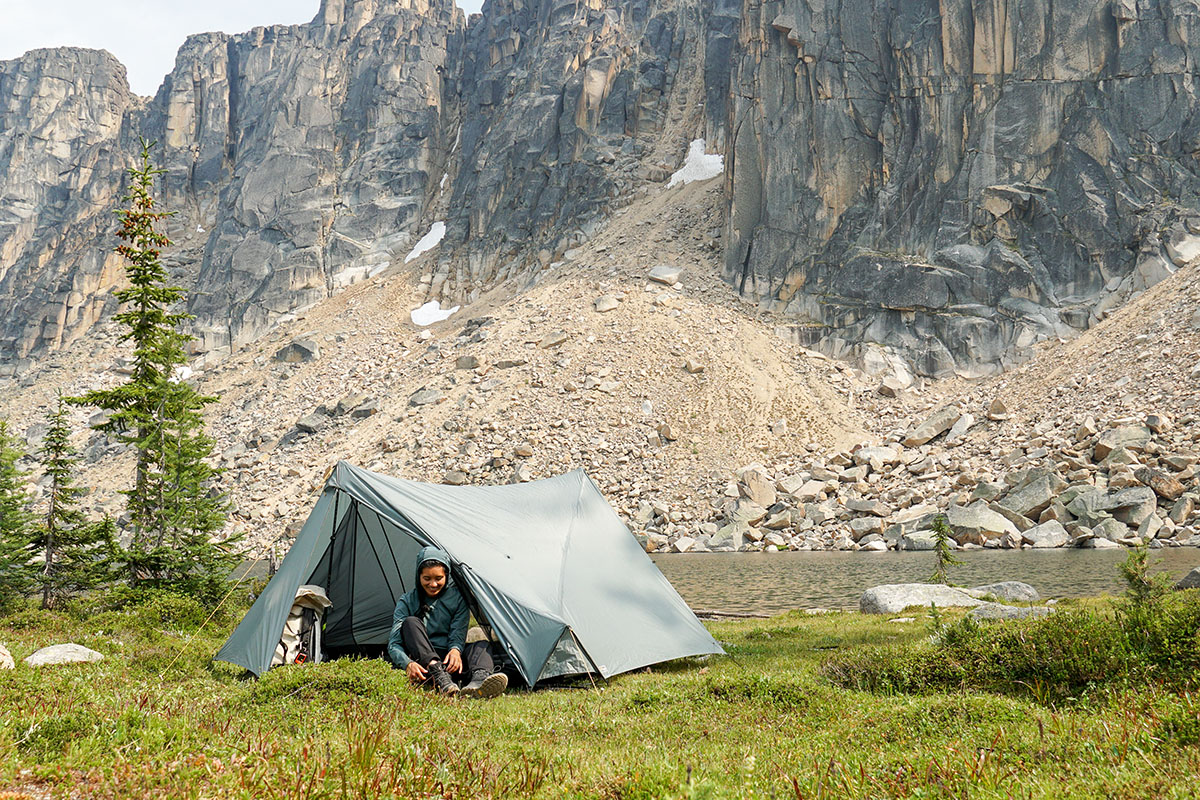
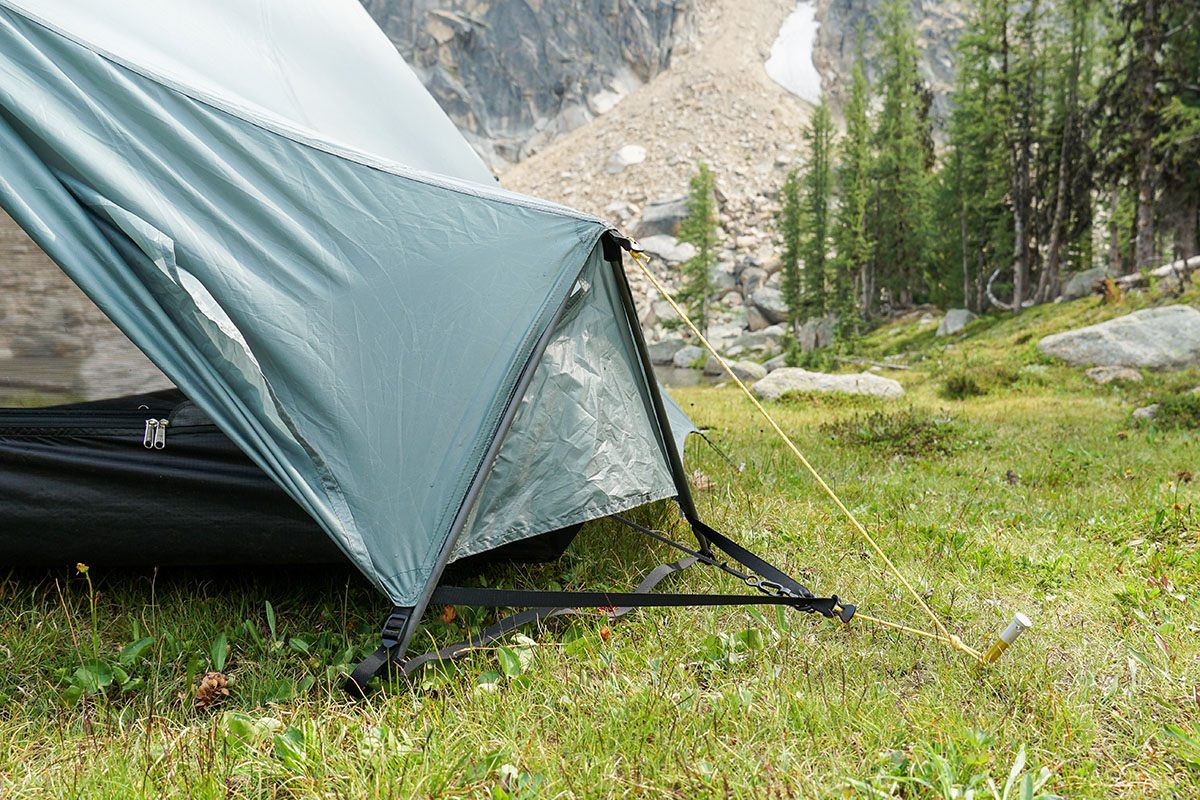
| Tent/Shelter | Price | Category | Weight | Floor Dimensions | Fly Fabric | Capacities |
|---|---|---|---|---|---|---|
| Tarptent StratoSpire 2 | $299 | Trekking pole | 2 lb. 11.8 oz. | 86 x 52 in. | Silpoly (20D) | 1P, 2P |
| Durston X-Mid 2 | $280 | Trekking pole | 2 lb. 6.4 oz. | 92 x 52 in. | Polyester (20D) | 1P, 2P |
| Tarptent Double Rainbow | $299 | Semi-freestanding | 2 lb. 9.5 oz. | 88 x 50 in. | Silnylon (30D) | 1P, 2P |
| Zpacks Duplex | $669 | Trekking pole | 1 lb. 2.5 oz. | 90 x 45 in. | DCF (.55/.75 oz.) | 1P, 2P, 3P |
| Hyperlite Unbound 2P | $699 | Trekking pole | 1 lb. 8 oz. | 90 x 48 in. | DCF (.55 oz.) | 2P |
| Big Agnes Tiger Wall UL2 | $450 | Semi freestanding | 2 lb. 8 oz. | 86 x 52/42 in. | Nylon (15D) | 1P, 2P, 3P |
Tarptent’s StratoSpire 2 is a competitively spacious and storm-worthy ultralight tent at a good value. However, our favorite budget UL design is Durston’s X-Mid 2, which costs around $20 less while stacking up well in all-around performance. Like the StratoSpire, the Durston boasts a well-ventilated double-wall build, is very storm-worthy with a full-coverage rainfly that’s coated for added assurance, and offers great livability with 33.2 square feet of floor space and a 45-inch peak height. You also get a comparable amount of vestibule space (23 sq. ft. total), along with thoughtful touches like magnetic door keepers and a unique shape that ensures the doorways aren’t blocked by poles. A final feather in the Durston’s cap is its more intuitive setup, which involves just four stakes to get a secure pitch (we needed eight to get the StratoSpire taut). We love that the Tarptent is offered with both mesh and solid interiors for added versatility depending on conditions, but the X-Mid wins out in just about every other category.
Next up is an in-house alternative to consider: Tarptent’s Double Rainbow, which costs the same as the StratoSpire at $299 ($319 if you upgrade the aluminum arch pole to carbon fiber). The most popular option in Tarptent’s lineup, the Double Rainbow is a semi-freestanding design that can be converted to fully freestanding by placing trekking poles at the head and foot ends. It’s a little less spacious than the StratoSpire, including a 6-inch-shorter peak height and 2-inch-narrower width, although weight goes down slightly (2 lb. 9.5 oz.), and it’s much easier to pitch. The biggest downside is breathability: The Double Rainbow’s single-wall construction can grow swampy in warm weather, although Tarptent does sell a clip-in liner, or you can upgrade to the double-wall version for an additional $90 and 2.9 ounces. In the end, we consider the Double Rainbow to be the slightly more balanced UL design, but the StratoSpire is the roomier and more versatile option with its swappable interior.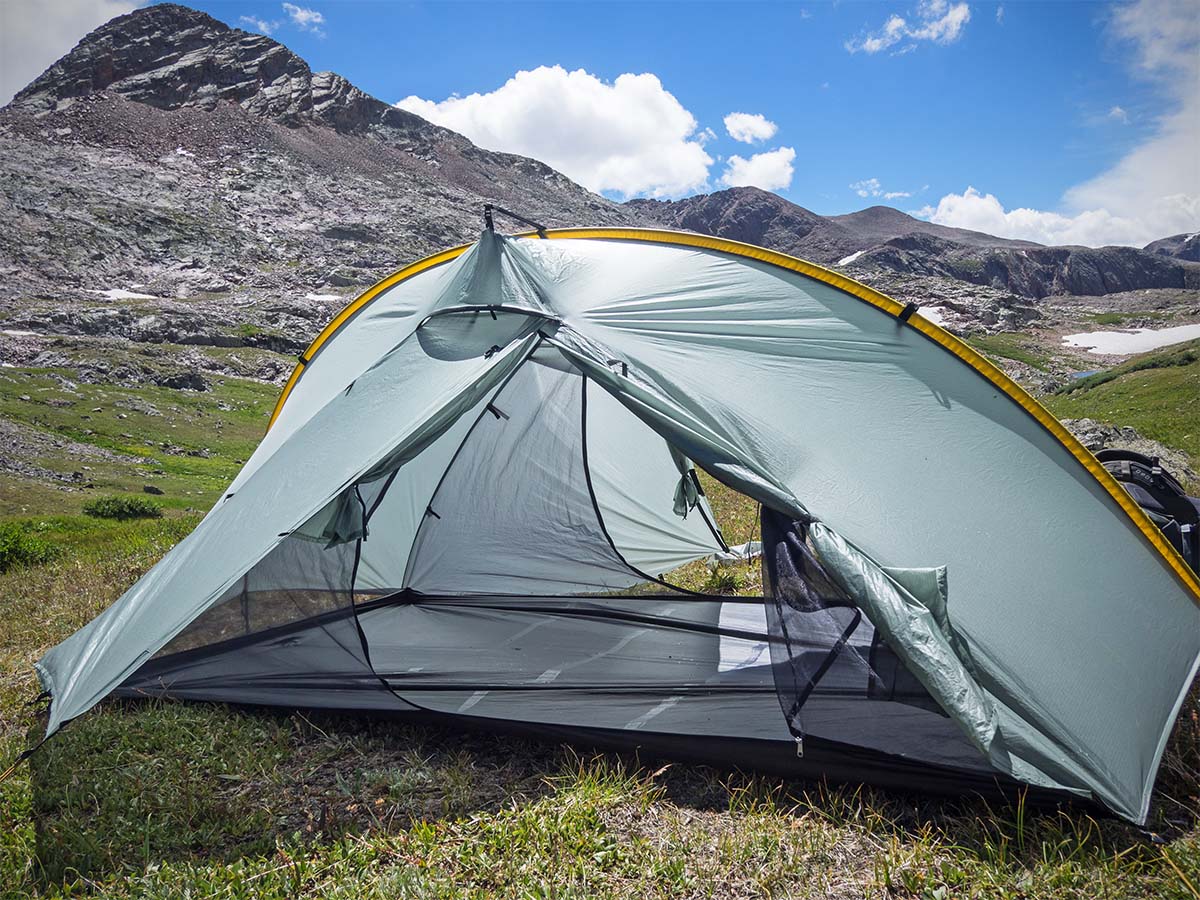
For thru-hikers, it's hard to beat specialized designs like the Zpacks Duplex and Hyperlite Unbound 2P. Both tents are made with Dyneema, which is known for its low weight, high tensile strength, and inherent water resistance. As expected, both the Duplex and Unbound check in considerably lighter than the StratoSpire (1 lb. 2.5 oz. and 1 lb. 8 oz. respectively) while stacking up well in overall livability. The Tarptent is the widest option (by 4-7 in.), although both the Zpacks and Hyperlite are 4 inches longer (all share the same peak height). The biggest differences are price and ventilation: The Zpacks and Hyperlite are both considerably more expensive ($669 and $699 respectively) due to their high-end constructions and feature single-wall builds that are noticeably less breathable. Ounce-counters and other minimalists focused on shaving weight may find the steep investment worth it, but the StratoSpire will save you a pretty penny while offering comparable livability and far better airflow.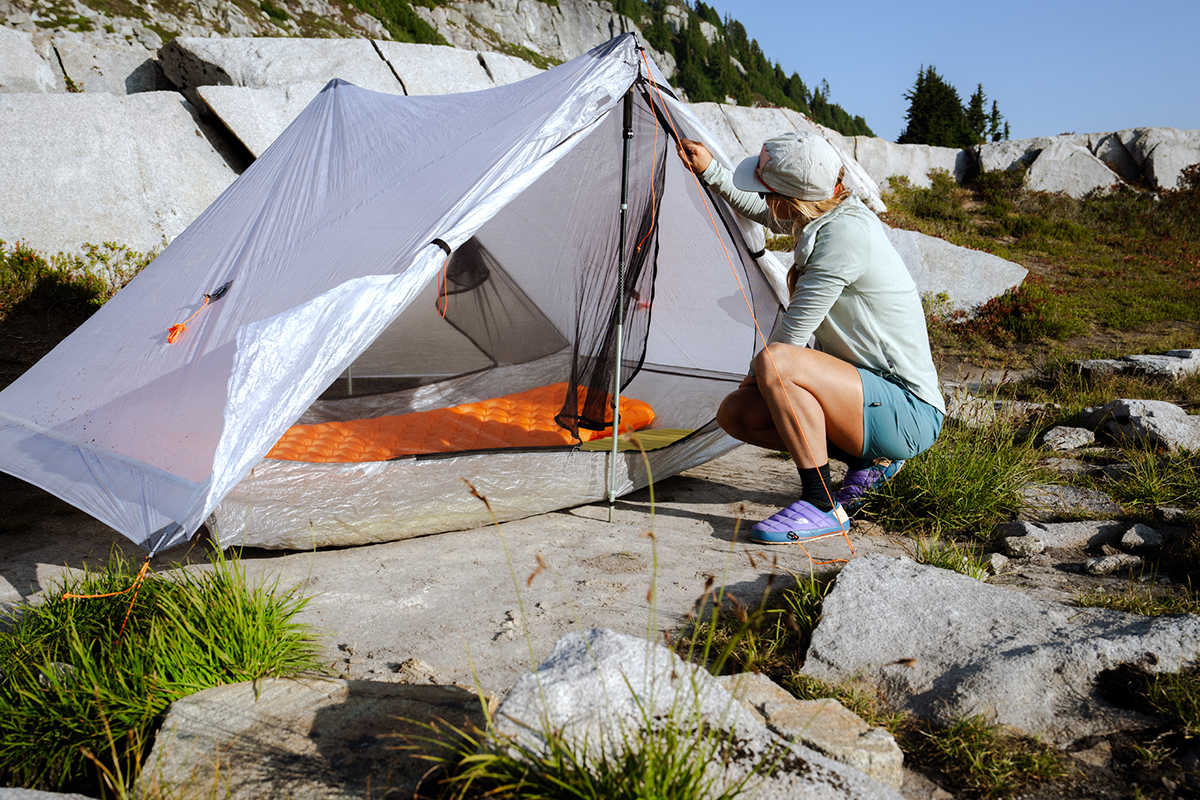
Last but not least is Big Agnes’ Tiger Wall UL2 Solution Dye, which is a semi-freestanding (read: more approachable) alternative that doesn’t require trekking poles for support. At 2 pound 8 ounces all in, the Tiger Wall is a little lighter than the StratoSpire but falls short in a few key areas. In addition to offering less interior space (including a heavily tapered footprint), the Big Agnes has smaller vestibules (8 sq. ft. each), a shorter peak height (39 in.), and a less durable 15D floor and rainfly that require caution around sharp rocks and twigs. It also costs around $150 more than the StratoSpire, although the more intuitive setup process is an undeniable advantage—especially for those who are just dipping their toes into the UL space. However, if you’re willing to deal with the StratoSpire’s learning curve (which is admittedly fairly steep), it offers notable benefits in livability, durability, and value.